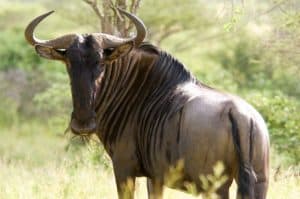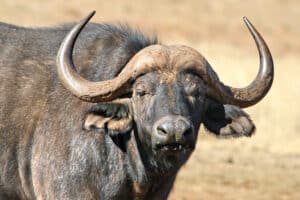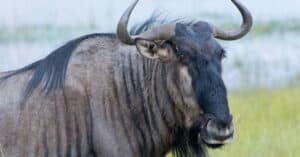Continue reading for our analysis...
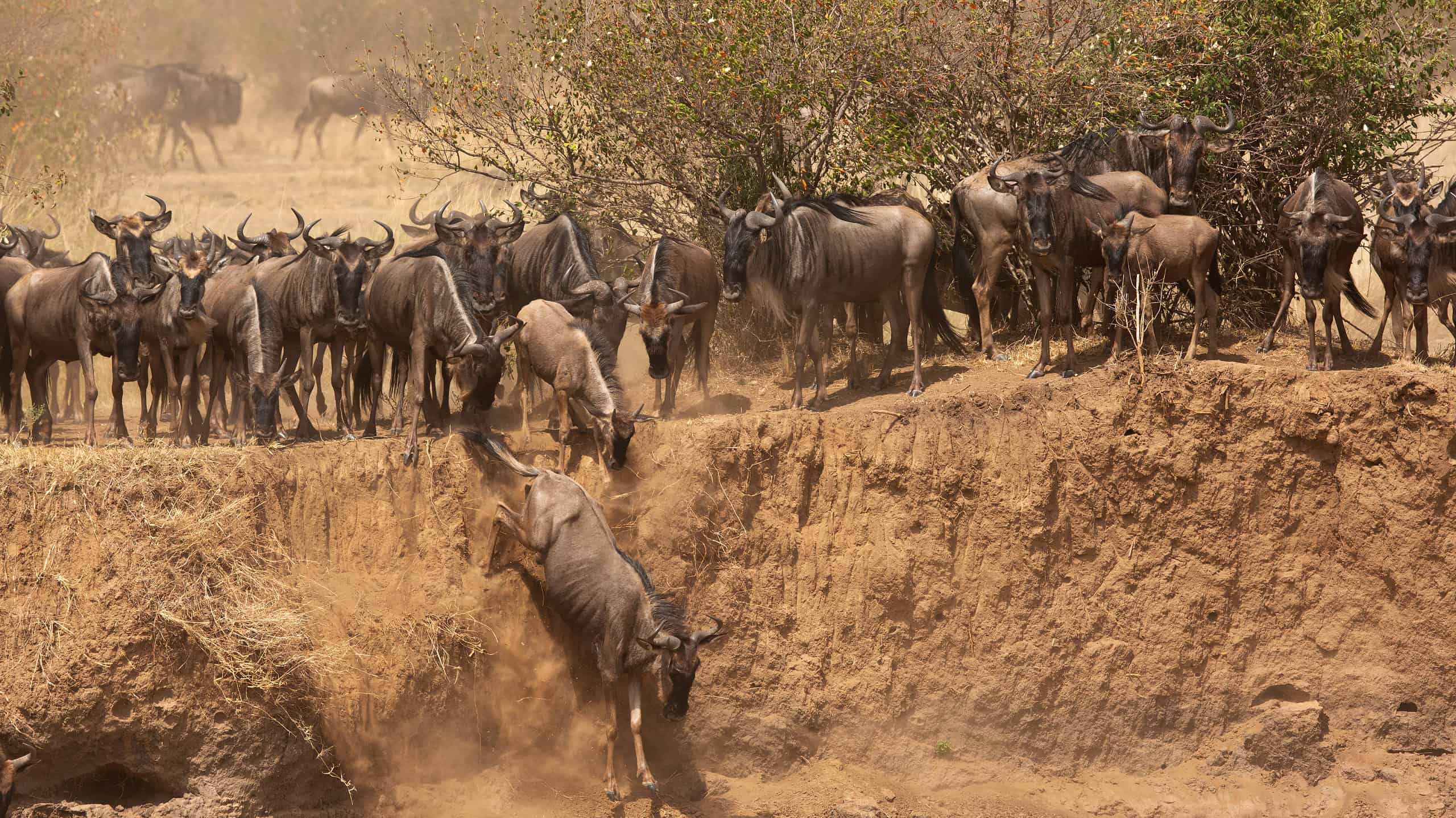
Wildebeests do a yearly journey called the Great Migration. More than two million wildebeest, zebra, and other herbivores migrate to the luscious Masai Mara every year. A famous natural occurrence that occurs continuously throughout the year is migration, the time of which is determined by the surroundings, the weather, and, the animals themselves.
In other words, the world’s largest mammal migration occurs after a rainy season. The herds traverse the Serengeti and Masai Mara environments in a circle of 500 miles in quest of water and greener, more mineral-rich grasses.
A video from a safari shows tourists experiencing a herd of wildebeests attempting to make their way through the wild. One thing stands in their way: a hungry and adamant lioness. Over ninety percent of the food hunting is done by one of the lionesses in a pride.
If you look closely at the beginning of the footage, the female lion already has a large animal hanging from her sharp teeth. Interestingly enough, she drops her current victim to pursue a wildebeest.
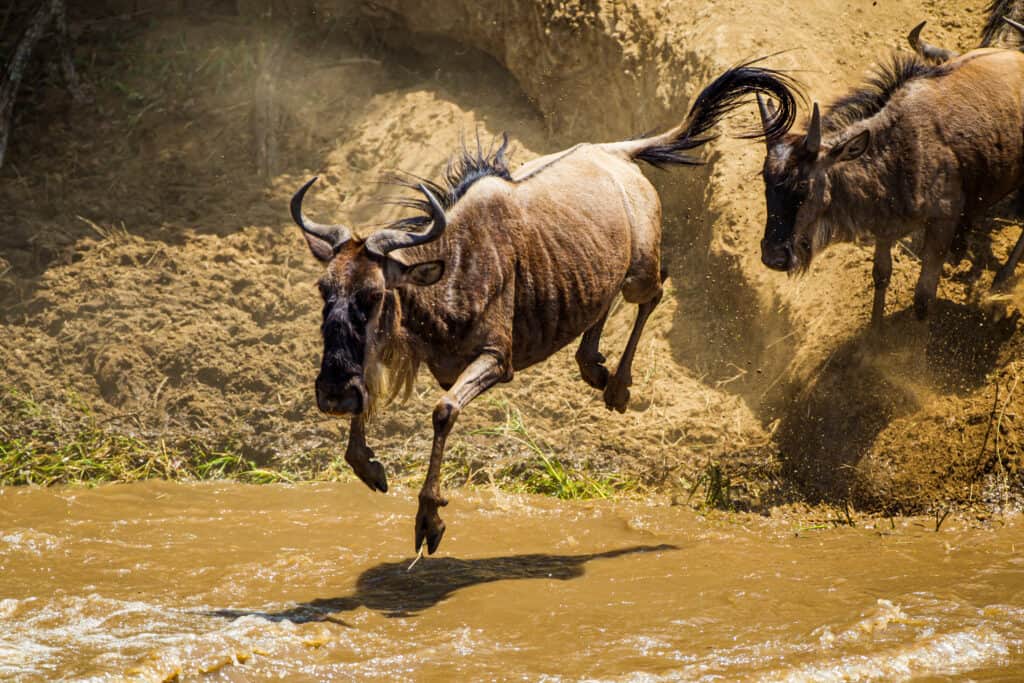
Wildebeest will cross the Mara River during the annual migration in Kenya.
©iStock.com/Wayne Marinovich
How Do Wildebeest Stay Safe During Migration?
The main thing that keeps these horned creatures safe is the safety in numbers. When watching the video we’ve included below, you’ll witness how many times the lioness comes close to catching one of these animals.
Thankfully, with a herd so large, it makes it much harder for the big cat to successfully pin a wildebeest down. She definitely gets close several times, leaving you on the edge of your seat as you observe the pursuit.
Eventually, it seems as if the feline gives up, retreating back to her original victim. As she lays down to eat, one more wildebeest catches her eye. Within seconds, the predator and prey are standing face-to-face.
The wildebeest takes a chance and runs from the hungry lion, hoping she doesn’t pursue him. In an unusual twist of fate, the lioness heads back to the twitching prey she previously caught.
It’s safe to say she realized it was going to take too much work to try to pin down one of these animals. She already has a fresh meal, and working hard to catch something bigger was completely unnecessary at the time.
A Lionness’ Hunting Strategy
When a male lion is part of the hunt, they assist the female lion by ‘finishing up’ the hunt by dragging the target to the ground. While running, the lioness is around 30% quicker than a male lion despite being smaller than him.
The lioness hides among the tall grass and watches her next victim. Because she is leaner and lacks a big mane of hair, the lioness can conceal herself more effectively than the male and blends in with her surroundings.
Thank you for reading! Have some feedback for us? Contact the AZ Animals editorial team.




